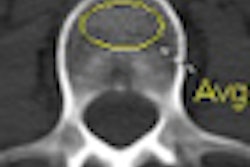CT not only improves the management of abdominal pain patients in the emergency department (ED), it also reduces hospital admissions significantly while boosting diagnostic confidence, according to a new study published in the February edition of the American Journal of Roentgenology.
Researchers from Massachusetts General Hospital in Boston found that the use of CT for abdominal complaints cut admissions by 44% and changed physicians' initial diagnosis in 49% of patients, while increasing diagnostic confidence by 31%.
Despite concerns over the ionizing radiation delivered in CT exams, the modality has been shown to improve diagnosis and management of patients in the emergency department, although most previous studies have been retrospective in nature, wrote Hani Abujudeh, MD, and colleagues (AJR, February 2011, Vol. 196, pp. 238-243).
Of the 115 million visits to the emergency department in 2005, 7.8 million patients (6.8%) reported stomach and abdominal pain as their chief complaint, according to the authors.
"Abdominal pain presents diagnostic challenges in all demographic populations," they wrote. "In addition to defining the correct diagnosis, emergency physicians also face the challenge of correctly managing patients in a timely fashion by deciding whether patients need to undergo surgery, require hospital admission for further workup, or can be safely discharged from the hospital."
The prospective study aimed to determine how CT affects physicians' diagnostic certainty and management decisions in patients with nontraumatic abdominal complaints presenting to the emergency department.
Physical exam time in the emergency department is short and patient histories are often incomplete, so imaging examinations have proved useful. But given the concerns about radiation dose, it's important to know whether CT helps patient management in a significant way, the authors wrote.
The group evaluated 584 patients (mean age, 53.5 years; range, 18-94) who presented with nontraumatic abdominal complaints to the emergency department from November 2006 through February 2008.
Prospective surveys of ED clinicians were conducted both before and after abdominal CT to determine the leading diagnosis, diagnostic certainty, and management decisions. Changes between the before and after surveys were assessed by Fisher's exact test and the log likelihood ratio. According to the results:
- The most common diagnoses at CT were renal colic (119/584, 20.4%) and intestinal obstruction (80/584, 13.7%).
- CT changed the leading diagnosis in 49% of the patients (284/584, p < 0.00001).
- CT increased mean physician diagnostic certainty from 70.5% (before CT) to 92.2% (post-CT) (p < 0.001; log likelihood ratio, 2.48).
- The use of CT also changed patient management in 42% of patients (244/583, p < 0.0001).
Physicians planned to admit 75.3% (440/584) of the patients to the hospital before CT; however, the plan was changed to hospital discharge with follow-up in 24.1% (106/440) of patients after CT. Surgery was planned for 79 patients before CT, whereas hospital discharge was planned for 25.3% (20/79) of these patients after CT.
"In the management of patients presenting to the emergency department with nontraumatic abdominal complaints, CT changes the leading diagnosis, increases diagnostic certainty, and changes potential patient management decisions," the authors wrote.
Previous studies have shown the utility of abdominal CT in acute conditions, the team wrote. One study found that CT performed after ultrasound provided additional information in 34.6% of cases. In another study of ED patients with nontraumatic abdominal pain, CT changed the management and disposition of patients in nearly a third of all subjects.
"The utility of CT is even more pronounced in elderly adults because evaluation of abdominal pain is considerably more challenging and diagnostic certainty is muddied by both comorbidities and the limitations of the physical examination and laboratory tests," the authors wrote.
In one study of the elderly, CT doubled the diagnostic certainty of emergency physicians in their evaluation of patients with abdominal pain, and it led to surgery for a significant number of patients in whom a surgical condition was previously unsuspected, the authors wrote.
The present study aimed to expand upon previous retrospective analysis with larger patient numbers, a prospective design, and fewer exclusion criteria.
"Our patient cohort had a variety of disease processes (e.g., urinary tract calculi, intestinal obstruction, acute diverticulitis, and acute appendicitis), which made the results more generalizable than other investigations with fewer patients," they wrote. "We observed a fair number of cases for which the leading diagnosis was no acute condition (13% of all pre-CT diagnoses) and believe that including this diagnosis in our analysis yielded a practical observation."
The principal limitation of the study was the lack of a control group, the authors stated. In addition, patients who did not receive CT were not studied.
Despite these limitations, CT in the emergency department did both increase diagnostic certainty and change planned management decisions, Abujudeh and colleagues concluded.
By Eric Barnes
AuntMinnie.com staff writer
January 24, 2011
Related Reading
Scoring system could limit CT scan for pediatric appendicitis, January 19, 2011
Large study shows exams using radiation are common in children, January 4, 2011
Reduced kVp CT still finds renal stones, December 23, 2010
Cancer risk from CT lower than previously estimated, December 2, 2010
Young adults face higher CT radiation risk than seniors, May 4, 2010
Copyright © 2011 AuntMinnie.com



















